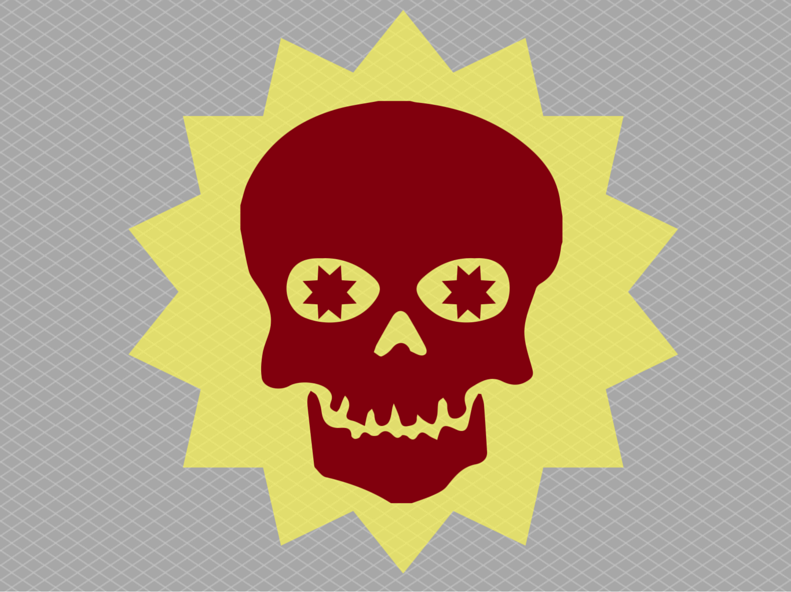I am a paramedic with over two decades working all over New York City. I worked in Harlem during the crack epidemic and have seen heroin trends come and go. Of all the public health officials who deal with drug abuse, we are the only ones who actually contact the patients in their own, natural, environments about the hows, whys and wherefores of their chemical adventuring. They have no reason to lie to us, because we have no agenda to put them in jail, or get them out of their housing. That, and they want us to fix what’s wrong. On the other hand, they will always tell other authority figures that they are making progress.
These are my street level observations on the ramifications of the new types of synthetic cannabinoids people are abusing; manufactured substances that mimic, in the brain of users, the effects of organic marijuana, which are generally referred to as “K2.”
We have seen an epidemic of K2 related emergencies. The advisories put out by our medical directors describe emergencies ranging from psychosis to cardiac effects, to respiratory failure. I have colleagues who had a K2 patient having unbreakable seizures use up their entire stock of medication. Last summer we saw a virtual parade of K2 emergencies clustered around the area of 125 street and Lexington avenue. There would be, even in broad daylight, a score of K2 users lolling, challenging the eyes and conscience of the community.
The police have since broken that cluster up. They could not make the K2 abusers vanish, so they just made them move along. This is like breaking up a large cancer tumor only to have it metastasize into smaller colonies.
All of the K2 patients I’ve seen are high, sort of like a mix of drunk and stoned on pot, but manageable. One of them was curled up in a fetal ball on the sidewalk outside the Lexington Avenue and 125th Street train station at eleven in the afternoon. He was hallucinating amid the crowd of people, who filmed everything we did with cell phone cameras. An NYPD Officer told me that it was the third K2 misadventure of the day. He did not appreciate being bothered.
When we asked him what was going on he said he was “smoking that crime.” He was too high for us to leave him alone; it would be a million dollar lawsuit if he drifted in front of a passing truck. Restraining someone is hard to make look good on social media. Sedating someone is not a great option either: the science of making someone safely sedate is called anesthesiology and there’s a lot to it. And, the ghost of Eric Garner hovers over us all. This one responded to some persistent sweet talk for a trip to the emergency room. He responded well that day, entertaining to talk to even, but the next day a brawl might break out.
Even for patients merely high, that are not seizing, going into reparatory failure, or psychotic, managing a K2 patient is fiendishly expensive in resources: many hospitals have a “one to one” policy, where an ER tech has to sit with them one on one the entire time they are in the ER. Hospitals have been devastated with lawsuits where a patient wandered away while the hospital was legally responsible for them. To leave them loose is to run the risk of them strolling around the ER, stoned and psychotic. So they routinely have to be restrained, which means they wind up tied up immobile in their bed, which is also fraught with expensive liability if done incorrectly. Other sick people are badly strained and their misery made worse by a howling restrained dope fiend. This is how too many of these patients can overwhelm an ER: by task-saturating the staff. (And, by exhausting their patience, which is not an unlimited commodity.) A rash of K2 patients, as in the latest episode in Brooklyn, can and does take up all of the available resources of EMS, same as a terrorist attack. Thus, a K2 episode can kill “bystanders.”
Why would anyone want this K2 stuff? Turns out there is a reason, a niche: All of my K2 patients have been residents of public housing, homeless shelters, or on parole. They don’t want to be homeless, have their food stamps revoked, or be sent back to jail because of a urine test that comes up positive for drugs, and there are no tests for K2. That marijuana use should, in and of itself, necessarily cut off an abusers’ safety net, or get a parolee sent back to jail, is not helpful for them. In my career I’ve seen as many emergencies caused by too much coffee as marijuana. Incidentally, I’ve seen fewer emergencies from people smoking pot than coffee. Beware of “edibles,” they are tricky.
It’s absurd to believe that pot heads, parolees and homeless people seek psychosis, seizures and respiratory failure. But they do want to get high, and get high they will, and they will do K2 rather than nothing. I had a K2 patient with ten packages of it in his pocket, printed with a professional brand name logo: a scary-looking lion rampant. “Danger, not for human consumption” was printed right on the label. A package of K2 costs about five dollars.
K2 users select for brands same as they would cigarettes. Some of the brands I’ve seen are “AK 47,” “Purple Haze,” “Spice,” and (my personal favorite) “Bad Robot.” The packages of K2 sold in the bodegas and smoke shops look a lot like the packet of plant food that comes with a bunch of flowers. The K2 powder is sprinkled on something that can be smoked. It is colorless and odorless. It just looks like a hand rolled cigarette. It’s made in factories in China, and is not detectable by drug dogs. Every time law makers pin down a K2 molecule enough to legally ban it, the producers simply rearrange the molecule, and the legal/illegal arms race goes on.
That same arms race quality is the reason why K2 does not show up in drug screening tests. Banning it, even if it could be legally defined, seems like the same fools’ errand as pot prohibition: we can’t stop tons and tons of incredibly fragrant marijuana from getting into the country. When I was growing up in Queens in the eighties, pot was easier to get than alcohol. Why would anyone go through the trouble of cultivating, raising, pruning, and smuggling marijuana when they compete with odorless, mass produced synthetics that come in tiny packages that can be hidden anywhere? I predict that our epidemic of K2 trouble is just starting.
A harm reduction line of reasoning should be applied to the sorts of people K2 appeals to. Having them high on pot is a better option for people so determined to be high that they will smoke powders of dubious origin labeled “Danger, not for human consumption.” Plus, I’ve been inside many homeless shelters. They are places of incredible dysfunction, indifference and despair. And If I had to live in one I’d want to get high too.
These sorts of patients will not respond when you tell them they are being naughty, that drugs are bad. They have been told “no” by just about everyone their entire lives. Incidentally, a shocking number of “regular” people, when I describe this situation, will hit on a solution of island banishment or even the death penalty for these pitiful people. Rarely will someone realize that the price of interference is greater than the price of acceptance, unless they are disposed to think that way already.
In considering these sorts of people, the taxpayers need reminding that this is OUR system, built for OUR needs and wants, and K2 patients have never had anything to do with making it what it is. They are the most powerless among us, but the regular folks’ instincts are to blame the K2 people for the outcomes of it. If they could “just behave,” they would not be homeless drug addicts to begin with. Some human problems have no solution, only management.
We taxpayers will pay for their follies one way or another. Like any other war, the drug war unleashes dangerous evolutions, and there is never a guarantee we will evolve successfully.
There can be no more perfect metaphor for the war on drugs than marijuana transformed into the Frankenstein’s monster that is K2. To the users, its havoc is preferred to homelessness and jail. For a half century our ideas of pot prohibition came out of the notion that it was the sort of menace K2 actually is, and now the beds, prison and hospital, are too thin to cope.


A rather timely post.
http://nypost.com/2016/07/12/multiple-people-hospitalized-after-k2-overdoses/
I was just reading it. Pretty amazing coincidence.
He called it, said they were expecting it.
Nypd scattered the little cluster of it around 125 and Lex, but it’s like zapping a big tumor and having it cascade and metastasize into several colonies of smaller ones.
A follow up may be in order. On the street level often two conflicting things happen: the addicts want more of the OD batch, assuming it’s “good” and “strong” but the makers don’t want ODs which bring infamy and police attention and articles in the NY Post. Aiee
Further reporting: http://www.wsj.com/articles/k2-patients-put-emergency-rooms-to-the-test-1469150923?tesla=y
And, of course, no mention whatsoever of the policies that prompt its use.
Yup. Totally agree. Plus the rational angle of why would someone choose a fiendish drug when they might a safer one
Thank you for the informational post and your unique perspective on the situation.